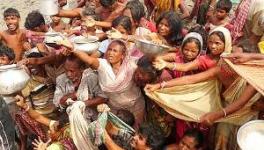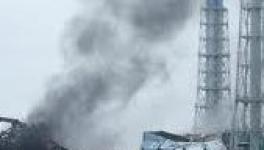Part II - Question marks on nuclear energy post Fukushima
Prabir Purkayastha (PP) - Coming back to the issue of nuclear renaissance which has been talked about- it is already collapsing because of the economics of nuclear power; that's a separate issue, but do you think that this accident will really make people rethink two issues? One is the extension of the life of those nuclear reactors, which are already forty years old and the other is, of course, what happens in future nuclear plants.
A. Gopalakrishnan (AG) - I think in the last decade there have been three trends. One, the extension of life for reactors, which the original designers and regulators had written off, after a certain number of years, but now we are extending it. The second thing is going in for much larger and larger capacity reactors like EPR which is sixteen-fifty mega watts. The third one is placing five or six reactors in a single site. Now, the root cause behind all these three is economics because we want larger reactors because one feels that there is cost effectiveness and economy of size coming into play. There are up to six in a site, because a lot of common work has to be done which will serve all the six reactors. Similarly, the third thing is the large size.
I think economics has driven these things and not engineering and really not safety thinking. That's what I am saying, therefore, all these aspects are being re-thought of and may go back to the earlier thinking of conservatism in all these three areas.
As you know, world over, every country is re-examining their nuclear policies. Very few, like India, are foolishly saying that everything is safe and we are all right. But, that's a very wrong notion and we should also pause and look at it.
PP- In fact Tarapur has both the problems- it's more than forty years old and it's also an even older mark one design. So do you think we should re-look at Tarapur?
AG- Problems also exist at Tarapur, the two steam generators completely conked out. The reactor was originally designed for two hundred megawatt and it operated at two hundred megawatt for some time and then because we did not maintain water chemistry properly, in both those reactors, the steam generators, the tubes gave away and lot of resulting radioactivity was release in those days.
So there was a period when Tarapur needed a whole lot of clean up for this. All these came about also because of the early vintage designs. This is the first, second or third general electric generator reactor built anywhere in the world, and at the time the tube material was chosen without really understanding the water chemistry maintenance in India. They really did not get too much guidance in this and General Electric themselves did not know much.
So it was part of their learning experience that these two steam generators had to be sacrificed and they were in such a location that the knowledge and availability of robotic equipment was poor. We are talking about thirty forty years ago and that we could not really cut and remove them and replace them with other steam generator. The only thing was to wall them off and abandon them. And that's what we have done. Now we have these two steam generators through which water is not passing at all and because of that we lost certain extra steam which would have been generated and therefore the reactors have been the deviated to a hundred and sixty.
And as I said, later came the problem of the suppression pool dynamics which was causing a lot of problems in America. The US was very close to shutting down boiling water reactors of the mark one type but again arguments were used that it will be a too much of a financial loss and they were allowed to continued. So we also have continued without really making many changes.
So the other thing is that this being one of the earlier reactors and that the nineteen seventy-four, our Pokhran one, General Electric has not left behind many of the drawings. So as pre-built reactors we practically have no drawings at all. So tomorrow if there is a serious problem and there is an emergency and somebody has to do some work internally [there will be a problem]. Frankly, as-built reactor is not there. When we did some inspection, we were surprised to see some welded joints which were not there in the original drawings at all. So what modifications they have done during construction time, they have not dutifully brought them into a drawing and handed it over to the Indians.
So we're sitting here with a reactor where the welding has been done, whether it is heat relieved or not, all these questions are there. A large number of questions are there and we are only getting three hundred and twenty mega watts out of these two reactors. So it's time about that India very seriously should take a look to see whether we want to have these potential additional problems from these two reactors just for the sake of retaining three twenty megawatts of electricity.
PP- If you really come right down to it, this is going to be a dampener on the nuclear scenario and definitely most countries will re-examine the nuclear issues, though it must also be said the fact that in spite of all this, there has been no large scale release of radiation, must also be credited to the nuclear engineers.
AG- That's true; I think there was containment. The containment was breached. The recent large scale release did not take place. One is because the reactors shut down dutifully on earthquake, which it's expected to do and did. I mean, mentally we all try to compare with Chernobyl. We don't realize that Chernobyl is something which came out of utter stupidity. Completely a manmade accident because the reactor was already operating and people were fooling around with testing and all that. It should really be compared with Three Mile Island, to some extent, and in which case you know it is worse case than Three Mile Island. It is worse because there are four reactors involved and they're all releasing it. So that is a better comparison.
Yes, nevertheless, I think you should say this is to their credit and that's why I hope this incident will not lead to any wild decision to stop nuclear power per se. But I think the growth from here on will be a safe and slow approach. If it kills nuclear power or slows down nuclear power it will be due to the economics because now, the kinds of short cuts we took, such as keeping a reactor for much longer than it's lifetime as seen by engineers and material scientists in the name of economics. I think this probably will not be possible any more.
PP- And one should re-look at the size issue as well.
AG- And if actually you already recall the Russie report from EDF, they have taken a close look at EPR again, at the instruction of the French government, and one of the conclusion they came to, is that perhaps in the next round a lower rating EPR should be attempted. The large ratings had made it more complex and perhaps to avoid the complexity one should go back to a lower rating.
Get the latest reports & analysis with people's perspective on Protests, movements & deep analytical videos, discussions of the current affairs in your Telegram app. Subscribe to NewsClick's Telegram channel & get Real-Time updates on stories, as they get published on our website.























